Introduction: Adaptive Optics
Adaptive optics technology was declassified in the early 1980s and since then has been a key component in retinal imaging, microscopy, ultra high intensity lasers and astronomy. The technology allows for the compensation or correction of aberrations introduced along light propagation in order to improve the imaging or focusing performance of an optical system. Adaptive optics helped three teams of scientists obtain Nobel Prizes in 2015, 2018 and 2020.
Adaptive Optics in astronomy is employed to correct for the blurring effects of the atmospheric turbulence and allow ground based instruments to perform at diffraction limits.
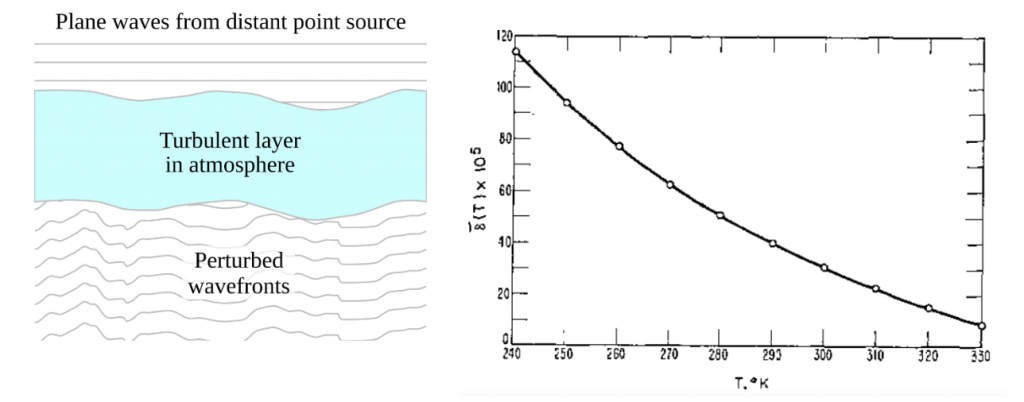
Figure 1 : Because of the wind and the dependency of the air refractive index in function of temperature and pressure (right graph), the transmitted wavefront changes in time (left figure)
Adaptive Optics has become an even more important technology with the increase of the diameter of the telescope. AO uses wavefront sensing to measure wavefront distortions at specific altitude and a deformable mirror to compensate for those distortions; a computer is processing the measured wavefront and controls a deformable mirror.
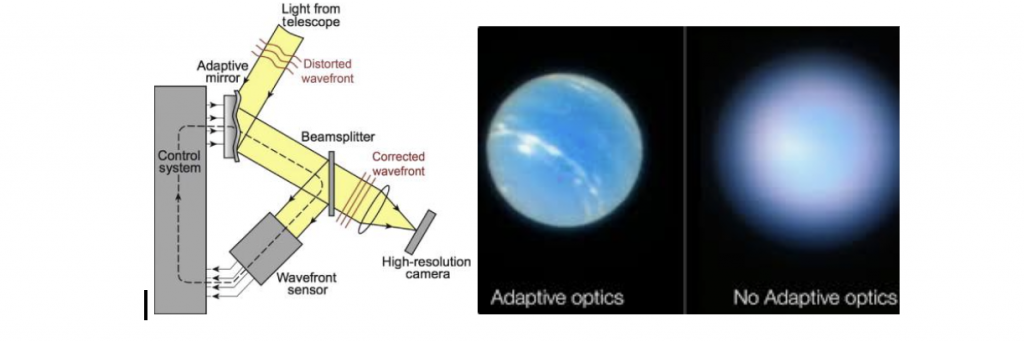
Imagine Optic has been manufacturing high performance wavefront sensors since 1996. Their HASO is a reference in the industry and scientific research. It is delivering an unequaled level of performance and was involved at several levels in several ground based and space telescopes such as the Gemini Planet Finder, Herschel space telescope, Euclid, the Roman Grace, Vera Rubin and the James Webb observatories.
The company is also an industrial pioneer in Adaptive Optics. It has participated in the invention of two types of deformable mirrors and industrialized MICAO, the first “turn-key” AO system for super resolution, confocal and 2 PEF microscopy modalities.
Following the same idea of facilitating the integration of an AO system but this time on a telescope, Imagine Optic developed and industrialized CIAO (Compact Innovative Adaptive Optics). The system is designed to perform on telescopes with diameters up to 1m in diameter. Its design can easily adapt to f/# 6-10 and is available for applications in the 400-1100 nm and SWIR ranges.
CIAO system
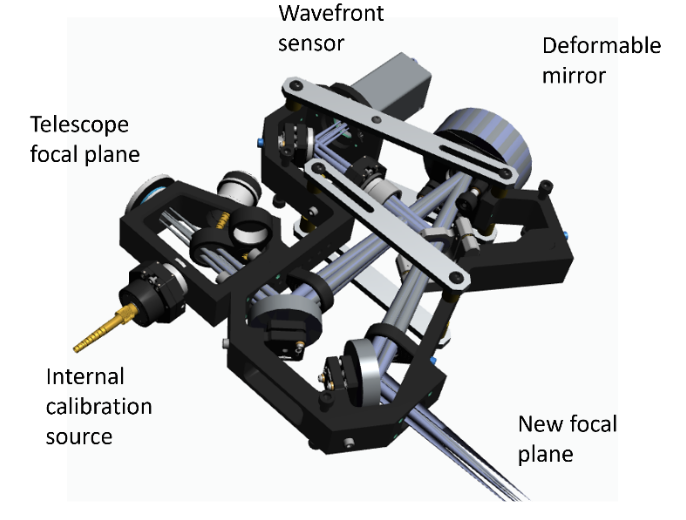
Figure 3: Design of CIAO system
The CIAO system:
- Includes its own source for calibration (interaction matrix).
- Includes a fast wavefront sensor, a fast piezo-electric deformable mirror, and a compact optical system for optical relay and beam transportation.
- Offers flexibility in terms of beam splitters to fit with imaging and telecommunications applications.
- The system can modify the transmitted wavefront at the scale of 10 nm RMS: the quality of the acquired images is therefore increased thanks to the deformable mirror which compensates for aberrations due to atmospheric turbulence in real time.
- CIAO can be fixed on a telescope through the eyepiece interface and creates a new focal plane on which a fiber holder or a camera can be installed.
Two CIAO systems are available with one for the visible range optimized for astronomy and one for the SWIR range more suitable for Free Space Optics (FSO):
| CIAO VIS | CIAO SWIR | |
| Spectral range | 400-1100nm | 900-1700 nm |
| Deformable mirror | Monomorph piezoelectric with 40 actuators | |
| Wavefront sensor | HASO FASTUp to 1 kHz13*13 microlenses | HASO SWIR FASTUp to 3.5 kHz11*11 microlenses |
| Calculator | Software WaveSky dedicated Windows basedC++ time critical core | |
| Optical features | Optimized for telescopes diameter 300-600mm (standard mechanical interface and numerical aperture f/D 8-12 (other optional)Adaptive optics correction: Up to 40 modesRejection bandwidth cut-off frequency 50 Hz | Optimized for telescopes diameter 300-600mm (standard mechanical interface and numerical aperture f/D 8-12 (other optional)Adaptive optics correction: Up to 40 modesDedicated to FSO for flux >10nW |
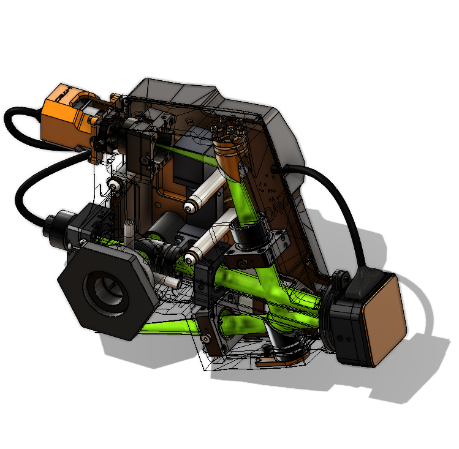 | 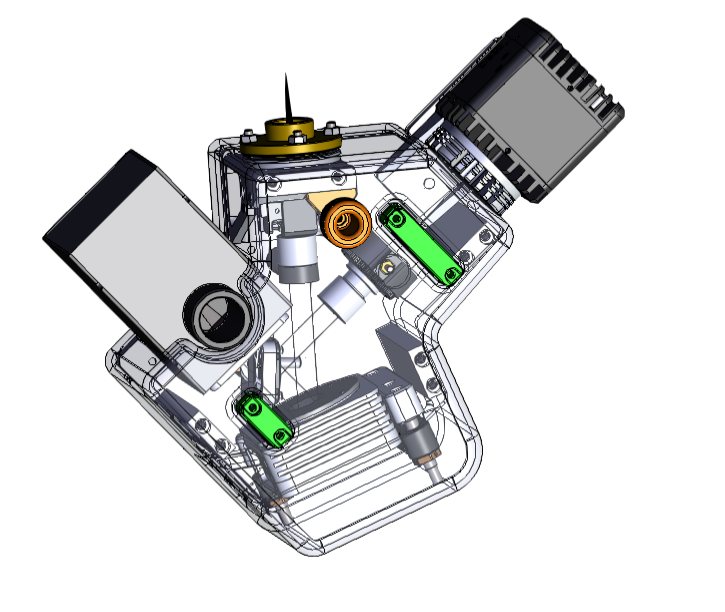 | |
WaveSky, AO operations and monitoring software:
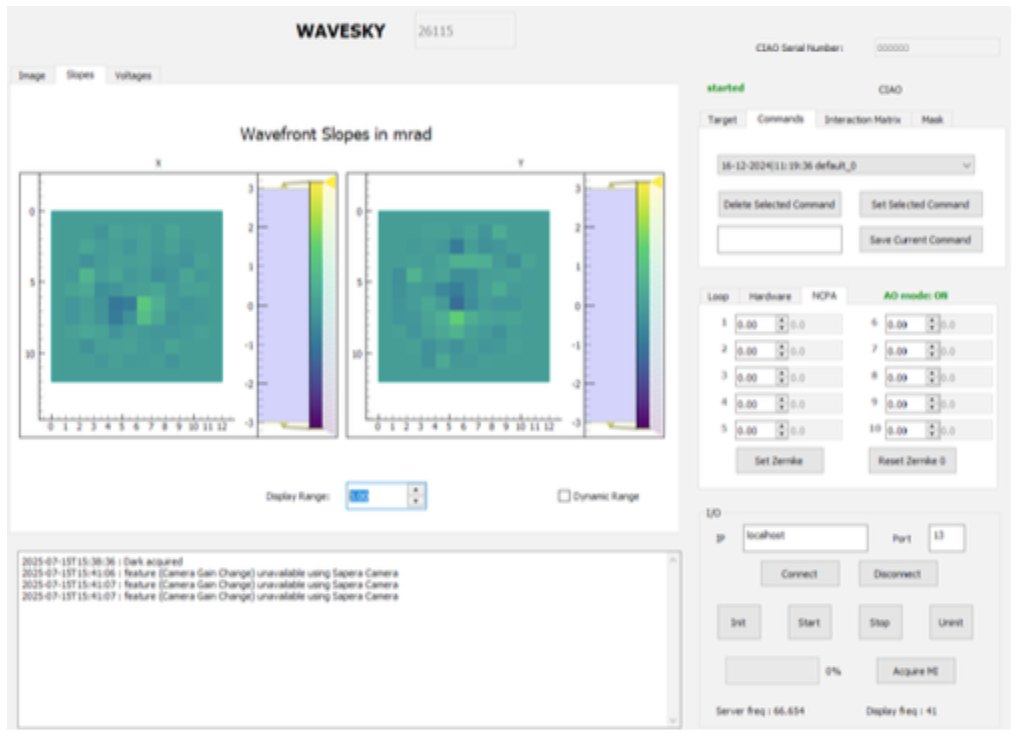
CIAO comes with software allowing the calibration of CIAO and monitoring its operation. The calibration is made using an internal source controlled via the software. The software architecture is based on the association of a server streaming slopes that WaveSky displays; this is to maximize the correction velocity of the system.
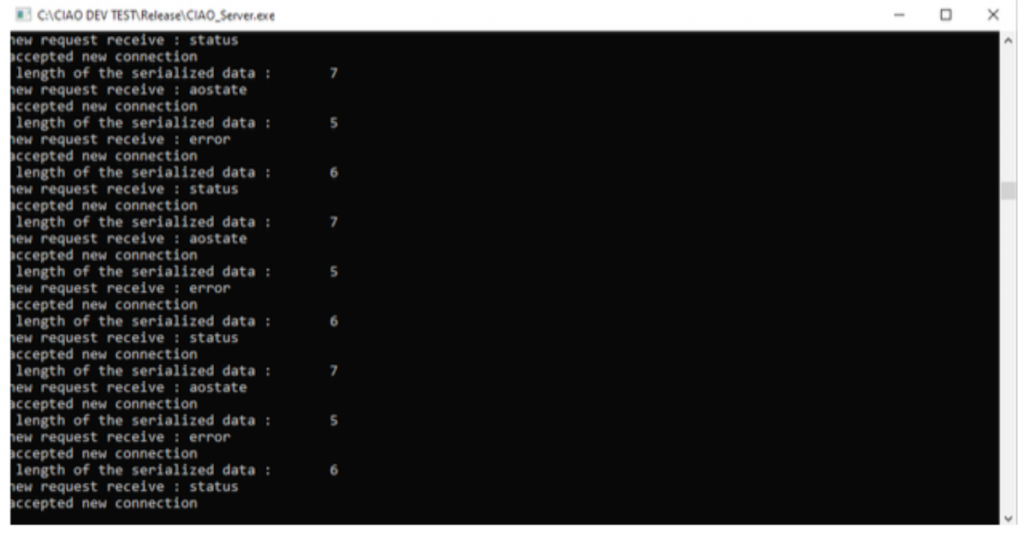
CIAO VIS application:
CIAO VIS for Space Situational Awareness (SSA)
CIAO VIS allows high-resolution imaging of Low Earth Orbit (LEO) satellites:
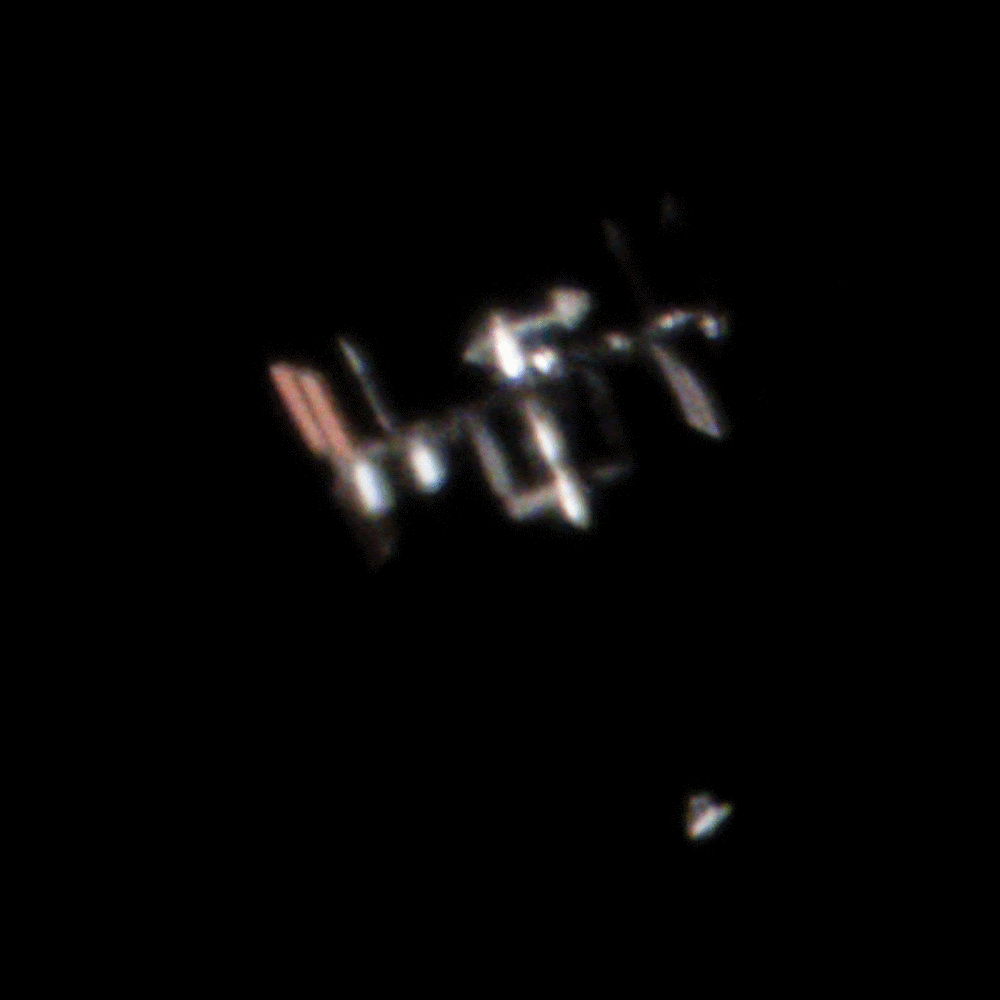
Figure 4 : Without Adaptive Optics (AO), the image quality is blurred
CIAO VIS for high resolution imaging in astronomy

AO allows for improved resolution of telescopes and is now available for amateur and professionals. It can increase performance for interferometry or spectrometry, for example within the framework of the ESO project STELLIM designed to take advantage of the Very Large Telescope interferometer (VLTI) infrastructure. The STELLIM interferometer’s goal is to provide reliable imaging of the surface of cool evolved stars by combining the light of 13 telescopes in the visible. It uses optical fibers to carry the light to the VLTI delay line tunnels. Coupled with a considerable gain in terms of fabrication and cost, the use of CIAO on this project made it possible to benefit from the performance of adaptive optics to optimize the injection of light from telescopes into the fibers.
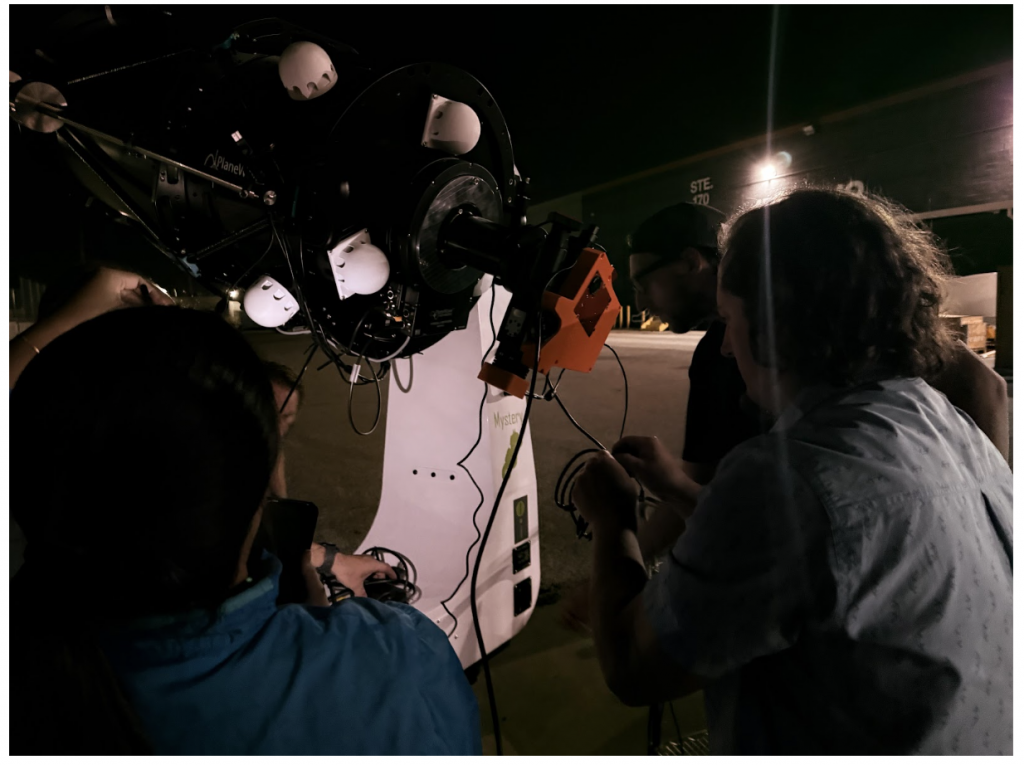
Installation of a CIAO VIS on a PlaneWave CK 17 telescope
CIAO SWIR for Free Space Optic (FSO) and Satcom
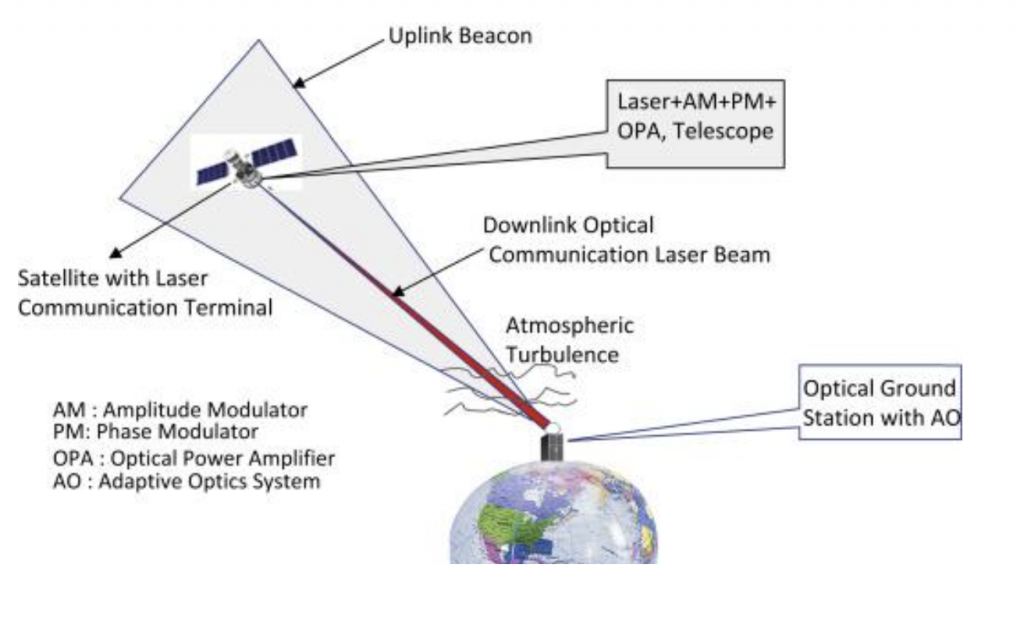
Today, we must explore new methods of communication due to the saturation of RF frequency bandwidth. Additionally, RF signals are broadband, making satellite-transmitted information easier to intercept compared to laser optical systems, which can precisely target a station and transmit data in a highly secure way, making them ideal for military security applications. Another advantage of optical waves is their ability to achieve extremely high data rates, up to 100 Gb/s, when paired with adaptive optics. However, to decode the information, it’s crucial to inject the laser light into a single-mode fiber.
Below are the first results of fiber injection using a telescope:
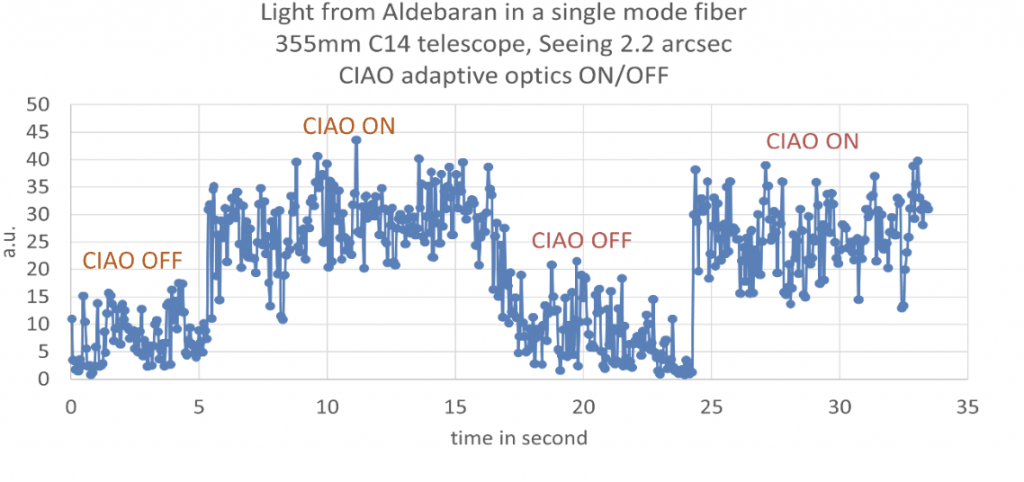
We can observe a signal acquisition proportional to the flux injected into the single-mode fiber, achieved using an avalanche photodiode. By alternating between loop opening and loop closing, we can quantify the gain resulting from the improvement of the PSF (Point Spread Function). The first test of injection on a 355mm diameter telescope under bad seeing conditions (2.2 arcsec) showed a gain of 5 on the number of photons at the fiber output.
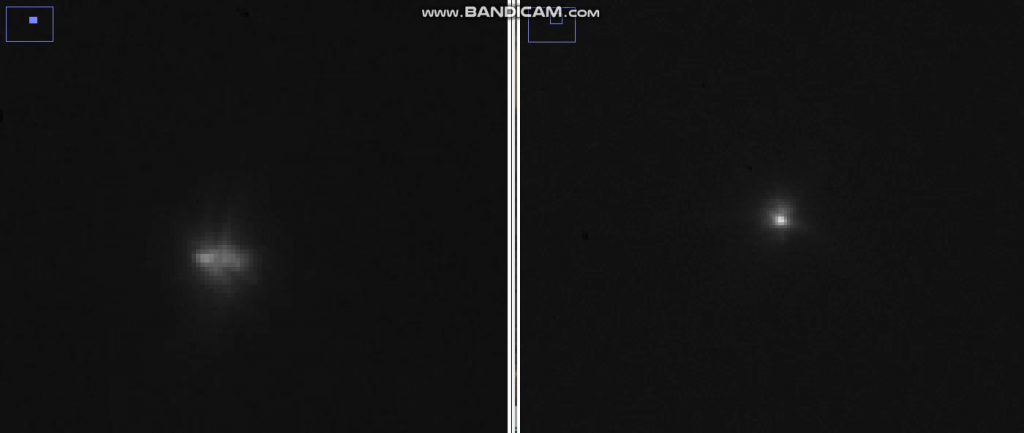
Figure 5 : PSF without AO (left) compared to PSF with AO (right)
Another very interesting result is the measurement of signal transmission through the atmosphere, both with and without adaptive optics:
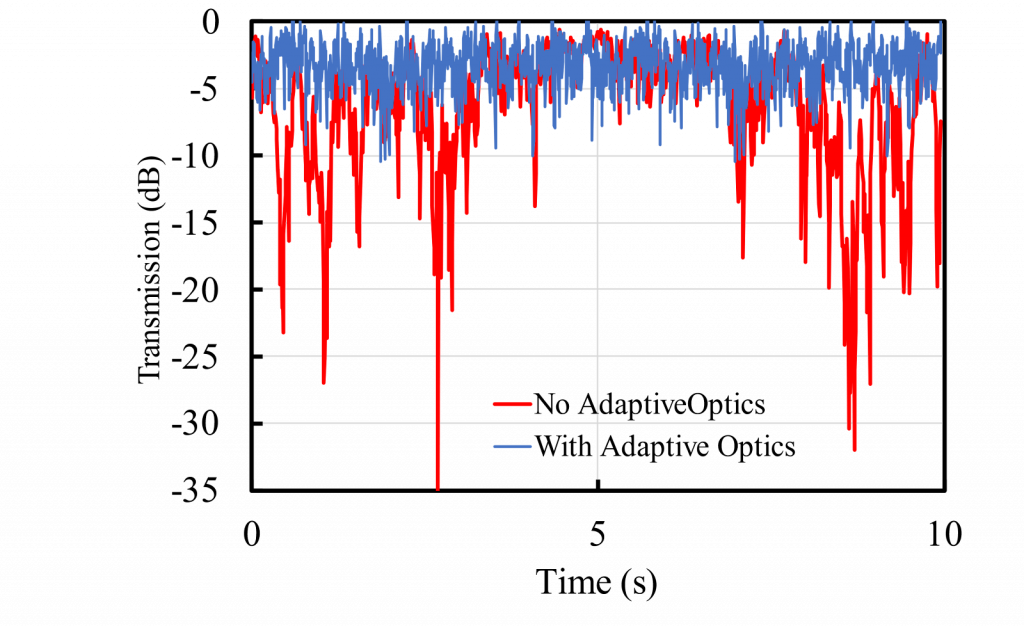
Thanks to our partnership with NOKIA, this was simulated in the lab using an atmosphere emulator, where we observed signal losses of up to 35 dB without adaptive optics. However, with adaptive optics, the losses were reduced to less than 10 dB.
Conclusion
Built on a simple architecture using off-the-shelf components, CIAO offers astronomers an affordable solution for efficiently coupling telescope light into a single-mode fiber. The system’s adaptive optics can correct static aberrations—such as mirror misalignment, gravity, and thermal effects—while also minimizing the impact of atmospheric turbulence, resulting in higher quality images. CIAO is also ideal for equipping ground-based telescopes, significantly improving data rates with high efficiency.
What we have is a plug-and-play adaptive optics accessory that delivers outstanding performance at an incredible price point!
To learn more about the CIAO and other adaptive optics solutions, click here.
